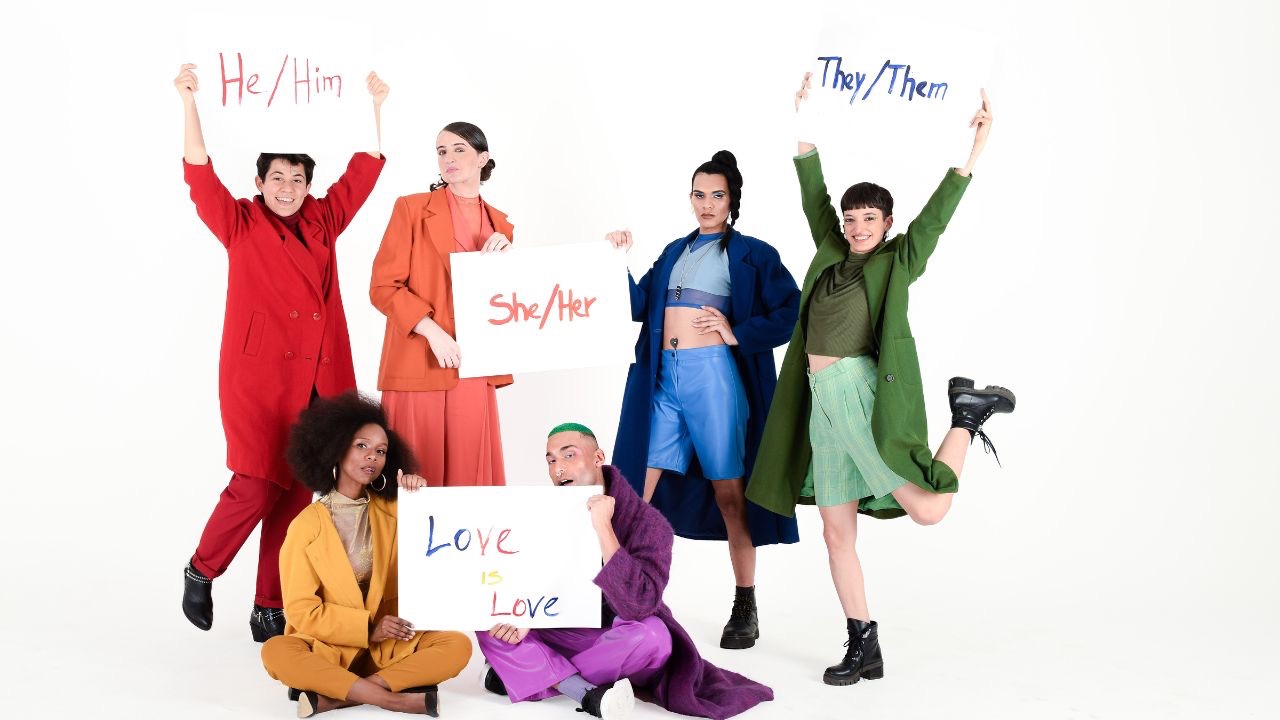
My oldest came out as being non-binary in a Facebook post during high school. They didn't say much about it and expressed that people could still use their given name and he/him/his pronouns. To my untrained, non-understanding eye, it felt like a "this is a thing I'm trying on, and I'll let you know how it goes" kind of post.
If I could return to that time in my child's life, I would ask more questions. What did it mean to them to be non-binary? Which end of the gender spectrum did they identify with more? Most importantly, how could I support them in this?
Merriam-Webster defines non-binary as "relating to or being a person who identifies with or expresses a gender identity that is neither entirely male nor entirely female." A non-binary person may identify as a mix of both genders, as more of one gender than the other, or as no gender.
There's no one way to identify as non-binary.
There are a lot of different ways to identify. For every person who identifies as non-binary, there's a unique way they view gender and their experience with it. And each person is as valid as the next.
Many non-binary people view gender as fluid, and their gender presentation represents whatever form it takes on any given day. This is not true of every non-binary person, just as it isn't true that every lesbian has a butch hairdo or that all gay men are into fashion and decorating.
While many non-binary people use gender-neutral pronouns, this is not true of all of them. Some use a combination of gender-neutral and feminine or masculine pronouns, such as they/she or they/him, and others use exclusively male or female pronouns. Some non-binary people use gender-neutral pronouns such as ze/hir or xe/xem.
The most respectful thing you can do when interacting with a non-binary person is not to make assumptions.
If you need to know which pronouns they use:
- Offer yours first. If they don't provide theirs next, ask what pronouns they use.
- Add your pronouns to the bottom of your email signature and your social media profiles.
- Put them on name tags when at functions or events.
This makes it more comfortable for people to share their pronouns and identify you as a safe person to interact with.
The word transgender is what's called an umbrella term. It has typically covered binary transgender people, as well as non-binary people. Like most language, it evolves, and the word non-binary is becoming its own umbrella term, according to GLAAD. Some non-binary people identify as transgender, but not all. Because there are so many different ways to be non-binary, and not all of them identify as transgender, they are becoming two separate identities. Either way, it's important to remember there's no right or wrong way to be transgender or non-binary.
In the same way, there is no one way to identify as being non-binary, and there's no one way to express yourself, either.
Gender identity is how you feel about yourself on the inside. Gender expression is how you present yourself to the world.
A non-binary person may present as feminine, masculine, neither, or both. They may wear masculine clothes one day and feminine clothes the next. Or wear a fancy dress with a tie and a pair of Oxford shoes. Like with pronouns, it's best not to make assumptions about a person based on appearances. It's better to ask questions than to say something offensive and make a fool of yourself.
Like transgender men and women, non-binary people can choose to transition. Transitioning looks different for each person. Some people decide to change their names and select different pronouns. Others choose to change how they outwardly present themselves to the world. Some choose to go through one or more medical transitions. Others choose to do all of the above. And some decide not to transition at all. This doesn't make them any less of a non-binary person.
If you think about gender as a spectrum, with masculine identifying people on one end, feminine identifying people on the other, and neutral people in the middle - those who identify with no gender - everyone else falls somewhere else in the middle. All those people in the middle are non-binary people. They fall outside of the normal gender binary.
They might identify as Genderfluid, Agender, Bigender, Genderqueer, or many other identities under the non-binary umbrella. In simplest terms, it's anyone who doesn't identify as a man or woman.
Subscribe to get my latest content by email, and I'll send you SIX questions to ask yourself before sharing that your child is transgender: because it can be a little overwhelming and sometimes you just need to know where to start.
We hate SPAM. We will never sell your information, for any reason.

